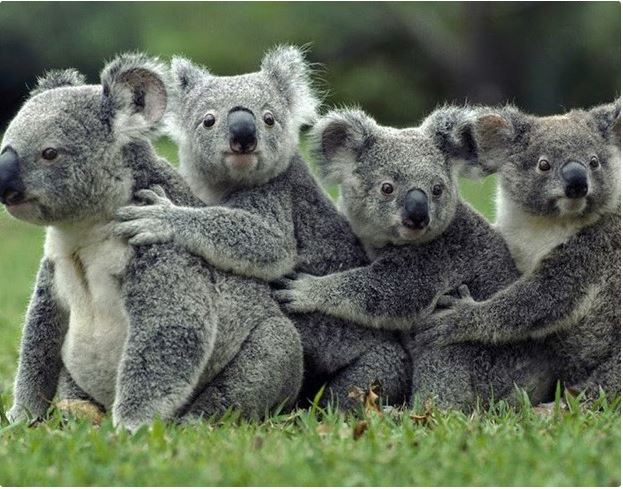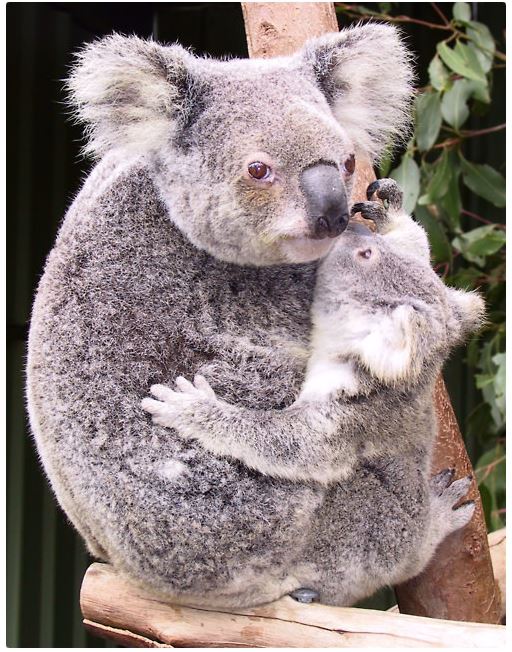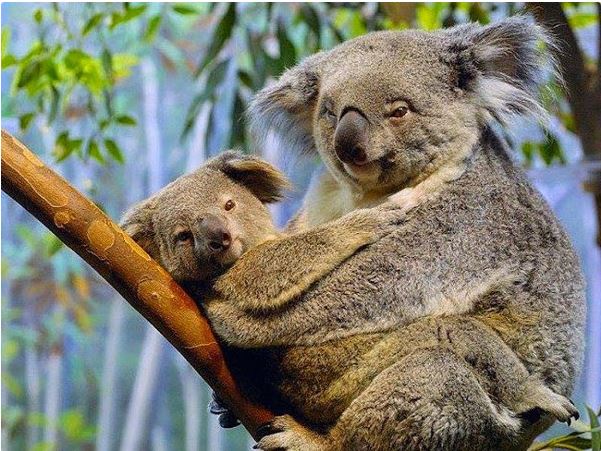Koala bears, often regarded as one of Australia’s most beloved and iconic creatures, continue to captivate hearts around the world. These gentle marsupials are not only adorable but also possess some truly surprising facts about their biology, behavior, and life in the wild. In this article, we’ll explore everything from their unique dietary habits to their slow-paced lifestyle, uncovering the remarkable aspects that make koalas a standout species in the animal kingdom.
Koalas Are Not Actually Bears
Despite their name, koala bears are not bears at all. They belong to a completely different classification, known as marsupials, which means they are closely related to kangaroos, wombats, and Tasmanian devils, rather than the actual bear family. Koalas are scientifically classified under the species Phascolarctos cinereus.
The term “bear” was mistakenly applied due to their bear-like appearance, particularly their round ears and large, black noses, but the similarities end there. In reality, koalas are more closely related to the wombat and share the same order, Diprotodontia.
Tiny Koala Babies: A Miraculous Beginning
One of the most fascinating aspects of koala reproduction is the development of their babies. At birth, a koala joey is incredibly small—about the size of a jellybean. They are born blind, hairless, and underdeveloped, weighing just around 0.5 grams.
After birth, the tiny joey crawls into the mother’s pouch, where it will remain for the next six months. During this time, the joey is entirely dependent on its mother for warmth, protection, and nourishment. The pouch serves as a safe and nurturing environment for the baby to grow and develop before it is ready to venture out.
Koalas Spend Up to 20 Hours Sleeping Daily
The sleeping habits of koalas are among the most remarkable aspects of their existence. These marsupials are known to be highly sedentary, with koalas sleeping up to 20 hours a day. This extensive amount of rest is essential for conserving their energy, as their diet of eucalyptus leaves provides very little in terms of nutritional value.
Eucalyptus leaves are low in calories and contain toxic compounds, so koalas must sleep a great deal to conserve the little energy they extract from their food. Their long hours of rest also help them avoid the heat of the day, as koalas are primarily nocturnal creatures.
A Highly Specialized Diet: The Eucalyptus Leaves
One of the most unique aspects of koalas is their diet, which consists almost entirely of eucalyptus leaves. These leaves are toxic to most animals, but koalas have evolved specialized enzymes and digestive systems that allow them to consume them without harm.
There are over 700 species of eucalyptus trees in Australia, but koalas are selective in their eating habits and only consume leaves from a few dozen species. Eucalyptus leaves are fibrous and low in nutrients, so koalas need to eat large quantities—up to 1 kilogram (2.2 pounds) per day—to sustain themselves.
Despite the abundance of eucalyptus trees in Australia, koalas are highly specialized feeders. They can only live in areas where the right types of eucalyptus trees are abundant. This specialized diet makes the koala particularly vulnerable to habitat loss, as the destruction of eucalyptus forests severely impacts their food supply.
Koalas Have a Unique Social Structure
Unlike many animals, koalas are not social creatures. They are solitary by nature and typically only interact during mating seasons. Each koala has its own home range, which it defends against other koalas, particularly males. These home ranges are marked by scent glands located on the koala’s chest, which emit a distinct odor that helps establish territorial boundaries.
Although they are not socially active, koalas do have some level of communication. They produce various sounds, such as grunts, growls, and snores, which help establish dominance or communicate with other koalas. Interestingly, koala vocalizations are often described as remarkably loud, considering their size. A male koala’s mating call, in particular, can be heard from great distances, helping to attract potential mates.
The Slow Life: Koalas’ Energy-Conserving Behavior
One of the most defining features of koalas is their slow pace of life. This can be attributed to their highly specialized diet, which requires them to conserve energy at all costs. As a result, koalas tend to move very slowly, and their activity is generally limited to feeding and climbing.
Koalas are excellent climbers and spend most of their time in the upper branches of eucalyptus trees. These trees provide both food and shelter, and koalas are adept at moving through the branches with ease. However, despite their climbing prowess, they remain relatively inactive, rarely venturing far from their home tree.
Koalas’ Sensory Abilities: Sight, Smell, and Hearing
Koalas have highly developed senses that help them navigate their arboreal environment. Their sense of smell is especially keen, as they rely on it to detect eucalyptus trees and identify potential mates. They also use their sense of smell to communicate with other koalas and to identify whether food is suitable for consumption.
In terms of vision, koalas have a relatively poor eyesight, especially at long distances. However, they are excellent at detecting movement, which helps them stay aware of their surroundings, particularly when predators are near. Koalas have excellent hearing, allowing them to hear the calls of other koalas from a distance.
The Growing Threat: Koalas Face Endangerment
Sadly, the koala population is in serious decline due to a variety of threats. The most significant factor contributing to this decline is habitat loss. As urbanization and agricultural development spread across Australia, eucalyptus forests—critical to the koalas’ survival—are being destroyed.
Furthermore, the impact of climate change has caused more frequent and severe bushfires in Australia, which have devastated koala habitats in recent years. These fires not only destroy the koalas’ homes but also directly harm the animals themselves, leaving many with severe burns or causing fatalities.
Additionally, diseases such as chlamydia and koala retrovirus have further reduced the population. Disease management and rehabilitation efforts are essential for helping koalas recover, but the overall situation remains dire.
Conservation Efforts: Protecting the Koalas
In light of these challenges, numerous conservation initiatives are underway to protect koalas and their habitats. Wildlife sanctuaries, habitat restoration programs, and fire management strategies are all part of the ongoing efforts to ensure the survival of this iconic species.
One of the most important steps is the preservation of eucalyptus forests, which are vital not only for koalas but also for many other species in Australia’s diverse ecosystems. Organizations and governments are working together to create protected areas where koalas can live safely without the threat of habitat destruction.
Conclusion: The Uniqueness of Koalas
Koalas are undeniably one of the most unique and fascinating animals on the planet. Their specialized diet, slow-paced lifestyle, and solitary nature set them apart from many other species. However, their vulnerability to habitat destruction and disease highlights the importance of conservation efforts to ensure that future generations can continue to enjoy these remarkable creatures.
Koalas are more than just an icon of Australia; they are a testament to the complexity of nature and the delicate balance required to protect endangered species. Through continued efforts, there is hope for a future where koalas thrive in their natural habitat for years to come.



